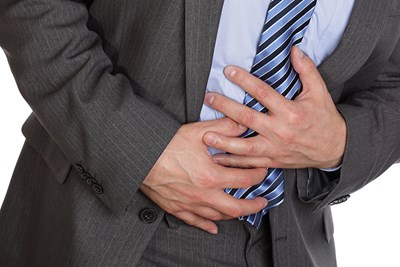Salmonellosis is a type of food poisoning. It can cause diarrhea, abdominal cramping, head and muscle aches, and a fever within six hours of coming into contact with the bacteria, although more commonly it takes 12 to 36 hours. It generally runs its course in under a week, and antibiotics are reserved only for the most severe cases. In these instances, hospitalization may be necessary to prevent the serious repercussions of dehydration and to provide immediate antibiotic treatment before the infection gets into the blood and other systems of the body, causing more damage or complications.
Although salmonellosis can appear as an outbreak, the majority of cases are individual instances. In fact, according to the Mayo Clinic, most cases of salmonellosis occur because of food that has come into contact with feces, as the bacteria live in the GI tract of mammals and birds. Thus, there are a few different ways that Salmonella may be in food. Furthermore, Salmonella is quite hearty and can survive in dry or wet environments for weeks or even months. One of the most important means of preventing salmonellosis, the gastrointestinal Salmonella infection, is to recognize the foods that carry it.
Animal Products
The most common foods that carry Salmonella include raw eggs, raw meat, poultry, and seafood. Birds can carry Salmonella, and when the egg is laid, it contains Salmonella within it. Consuming the egg raw, without the bacteria-killing aspect of heat, can introduce enough bacteria into the gastrointestinal tract to cause salmonellosis.
Other meats and poultries are hazardous not because of the condition of the animal before butchering, but because salmonella bacteria can actually be carried in feces. If feces comes into contact with the raw meat, it can transfer to the uncooked animal parts, creating the potential for consumption of the bacteria and subsequent development of salmonellosis if the meat and poultry are not cooked to a particular degree (which varies from meat to meat).
Produce
Fruits, vegetables, and even spices have been reported to carry Salmonella as well. Like seafood, this may because of water. The bacteria that causes salmonellosis can live in water for months. If seafood is taken from Salmonella-contaminated water and then eaten raw, it can introduce the bacteria to the GI system. Likewise, when produce is watered or “cleansed” with contaminated water, it may carry Salmonella into the consumer’s home.
Conversely, cutting infected meat on a cutting board and then utilizing it for produce without washing can transfer the bacteria around the kitchen. Furthermore, because salmonella can be transported through feces, improper hygiene, such as not washing the hands following going to the bathroom or touching animals, can not only send Salmonella straight to the mouth, but also transfer it onto food products.



